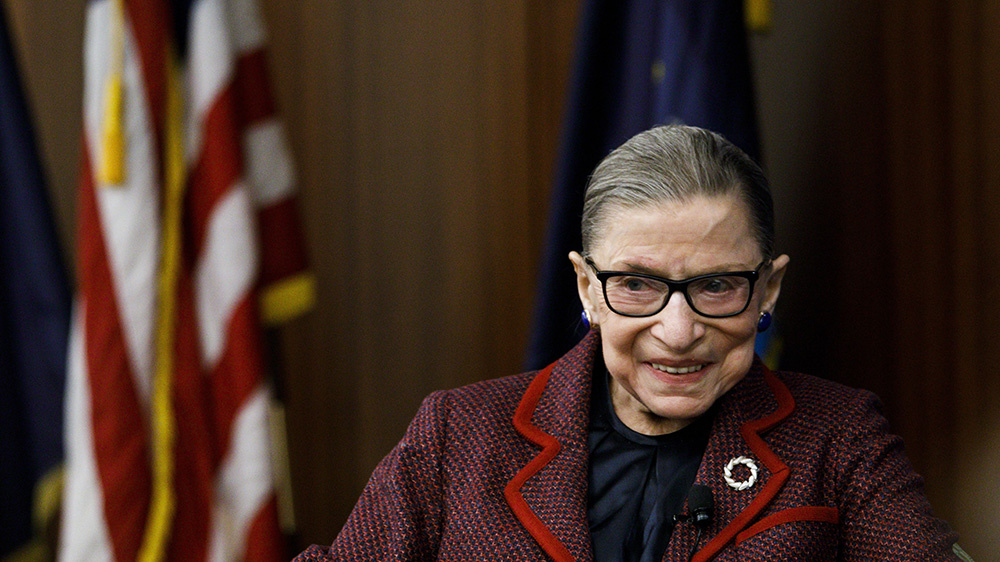Supreme Court Associate Justice Ruth Bader Ginsburg returned to work today for the first time since December, when she underwent surgery to remove two malignant nodules from her left lung.
The court’s eldest justice, who turns 86 next month, attended the private conference at which the justices review cases to be granted or denied, according to the public information office.
Her presence makes it likely she’ll be on the bench next Tuesday when oral arguments resume.
Ginsburg’s third bout with cancer in 20 years alarmed those on the political left, including some who had hoped she would retire when President Obama could have named her successor.
Were she to leave the court now, President Trump would get his third and best chance to make the high court more conservative, perhaps for decades to come.
But Ginsburg’s reappearance is in line with the standard recovery time of six to eight weeks following the lung cancer operation, called a pulmonary lobectomy.
The justice missed six days of oral arguments in January, the first time in her 25-year career she was not on the bench.
Fortunately for her, the court has an extremely light schedule this month – just six oral arguments over five days.
The pace picks up in March and April, when the court completes its argument calendar, and through June, when the bulk of the court’s 60-plus decisions are issued.
Ginsburg’s latest health scare began in early November, when she fell in her office and fractured three ribs on her left side.
She spent a night in the hospital, resumed working from home and was in court for the next round of oral arguments later that month.
It was during treatment for the chest injury that her lung cancer was discovered.
Ginsburg had surgery Dec. 21 and spent five days in the hospital.
Court spokeswoman Kathy Arberg announced Jan. 11 that her recovery was “on track.”
“Post-surgery evaluation indicates no evidence of remaining disease, and no further treatment is required,” Arberg said.
Ginsburg endured a lengthy battle with colorectal cancer in 1999.
A decade later she had pancreatic cancer, often deadly but in her case detected early.
She endured the death of her husband of 56 years, Martin Ginsburg, in 2010, and a heart procedure that required a stent in 2014.
All the while, she did not miss a day in court – until this year.
Forced to remain at home during the court’s Jan. 7-16 sitting, she participated in those cases by reading briefs and transcripts, and her votes were counted in the court’s private conferences.
Now that she is back, avid court-watchers will be attentive to her health in the coming months.
She must serve at least two more years to have a chance of outlasting Trump, who already has named Kavanaugh and Associate Justice Neil Gorsuch to the high court.
